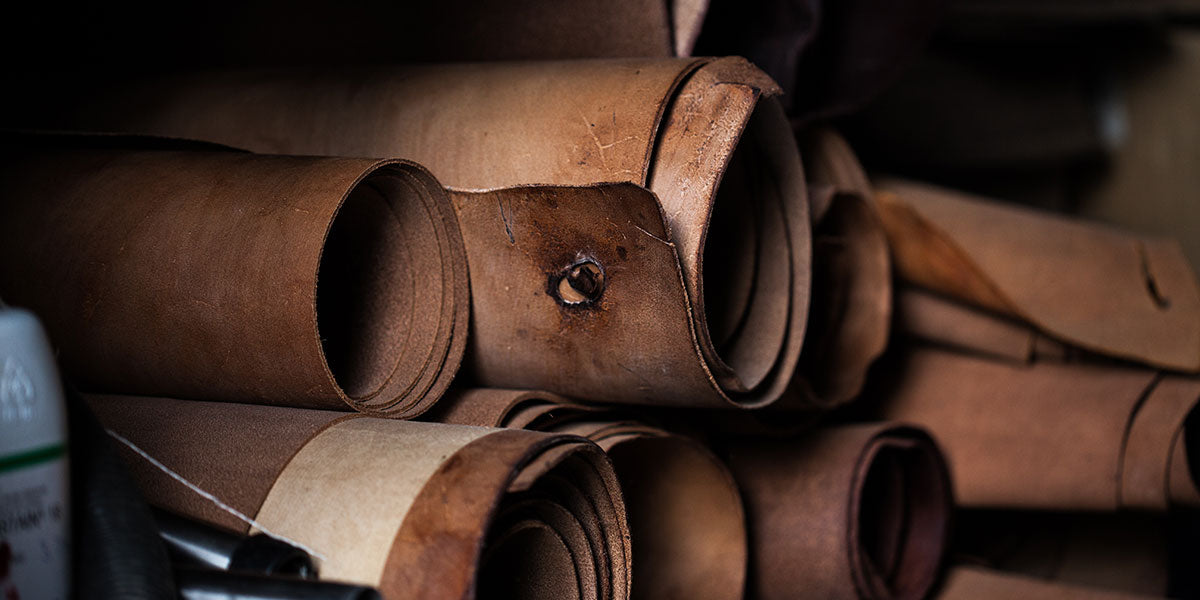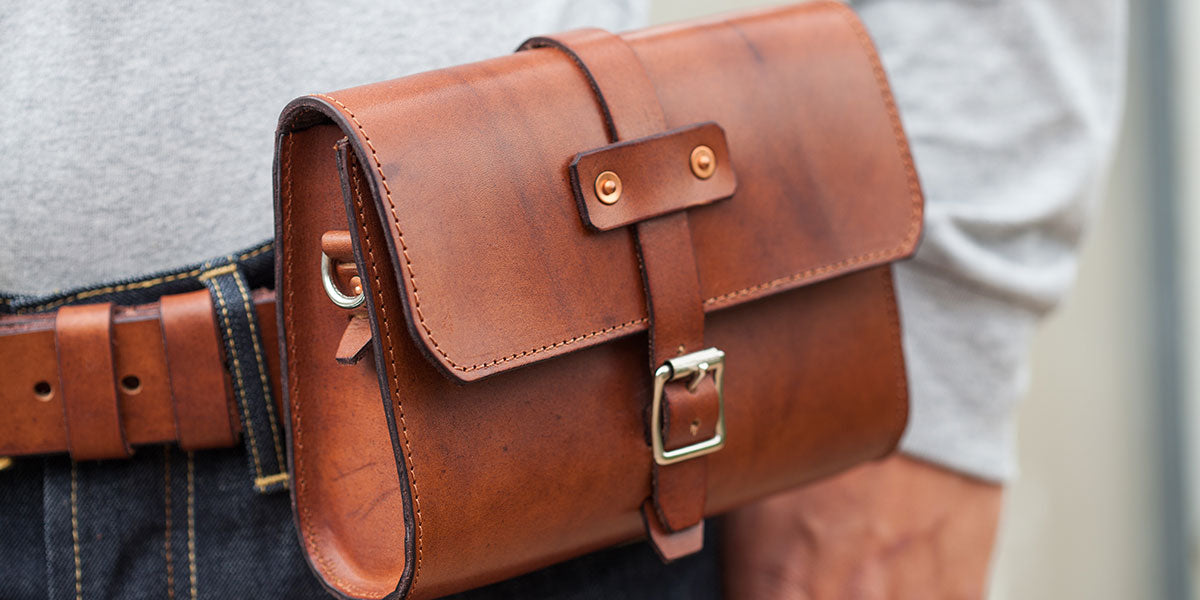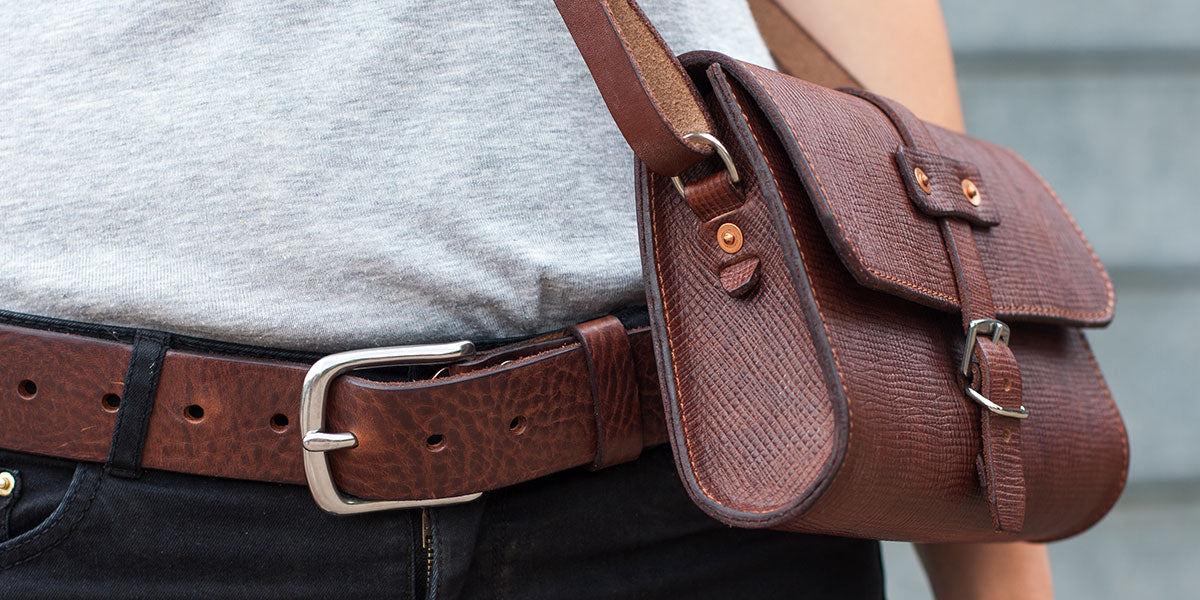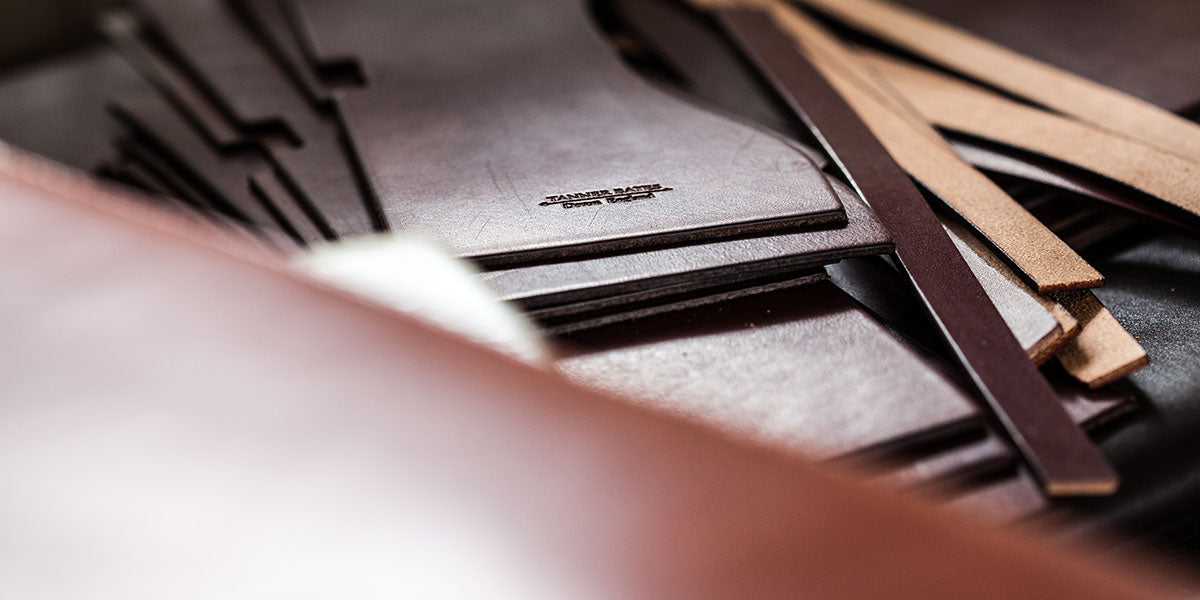About Our Leather - The smell is amazing!!
Tanning is the process of transforming animal skins alchemically into leather. Tannin is the active ingredient which traditionally, is sourced from harvested tree bark. Leather made this way is known as ‘bark tanned’ or ‘vegtan’ leather.

Tanner Bates are known for our speciality leathers
All our genuine leather goods are handmade from the best quality leather and we are particularly fond of speciality leathers. These come from smaller tanneries and use traditional processes that produce leather that lasts and is full of character.
Leather from family-run tanneries
We like to know who makes our leather so we go to family-run tanneries that use traditional processes. We are lucky enough to be near Bakers tannery in East Devon where we get our Oak Bark Tanned leather. Our other favourites are tanneries in Florence Italy, for their sumptuous hides in a wide range of colours, and the Horween tannery in Chicago USA, where they specialise in horsehide.
Leather tanned naturally using tree bark
Naturally tanned leather used in making Tanner Bates items has that familiar smell of real leather. Only leather made by this age-old process using tree barks to transform animal skin to leather has this smell. Modern factory processed leather lacks this very distinctive feature.

What is Oak Bark Tanning?
Tanning is the name given to the alchemical process of transformation from skin to leather. Tannin is the active ingredient which, traditionally, is sourced from harvested tree bark. Oak bark is slow to release its tannins making the transformation process about 12 months or more. The bark which comes from coppiced oak forests in the Lake District makes a liquor with water from the River Coly that flows beside the tannery. The cowhides are steeped in this liquor slowly progressing from mild to stronger solutions. The result is a durable yet supple hide with a strong smell of leather. From the tanning pit the hides go to to be dried, oiled and dyed (usually a rich shade of brown). All these processes are carried out individually by hand. The hand-dyeing technique using an aniline dye gives a depth of colour and a random variation across the hide.
What is Oak Bark Tanned Leather?
Oak bark tanned leather is leather that has been tanned using oak and tanning solution, it’s usually left in pits to tan slowly, without heat or mechanical stirring. It’s a much slower tanning process than many other tanning processes - oak bark leather tanning can take up to a year, while other methods can take just a month - but it produces a much better leather.
Oak bark tanning also has a long tradition in this country, which modern industry has left far behind. There is, however, one tannery left (the last in Europe) nestling in the Devon hills powered by a waterwheel producing the very best bridle and harness leather using oak bark from the Lake District. The hide of a Devon cow, oak bark, Devon river water and time (just these four ingredients), produce a very special leather that is prized throughout the world.
Genuine full-grain leather
The hides are known as “full-grain” which means that the skin surface is as it came off the cow, just without the hair. The surface of the skin has not been buffed. This leaves all the imperfections that were naturally on the cow’s skin; scars, blemishes etc. As a result, the hides we choose for Tanner Bates products are full of character and no two are the same. When comparing our full-grain oak bark hides with modern factory produced leather the analogy that comes to mind would be supermarket carrots compared to carrots from your own veg patch!
Rich with the smell of real leather made in the old fashioned way Tanner Bates products start off fairly stiff and will, with time and use, becomes supple and even more desirable.

Russia Kip Leather
Making this leather is a slow process taking over 12 months at our local tannery in Devon using 3 specific tree barks (Oak from the Lake District, Willow from Somerset and Birch from France) and an ancient technique of dressing with dubbin and birch oil.
The smell is extraordinary and the feel, luxurious. This leather is made for us using an old Russian recipe which came to be known about in the 1970's when a cargo of Russian hides was discovered aboard a shipwreck that has been at the bottom of the ocean just off the coast of Plymouth since 1786.

Italian Full Grain Leather
Our Italian cowhide comes from a family tannery in Florence where they still use the ancient method of tanning with bark from mimosa and chestnut trees rather than chemicals, to slowly transform the hides into leather. The Florentine Tanners make their leather in the old way using plant materials, traditional techniques, patience and closely guarded family secrets. The slow process of bark tanning yields a leather with a smell and patina reminiscent of a time past.
The leather is dyed with a stain rather than a pigment allowing the grain with all its marks and blemishes to show through. This is leather bursting with character and no two are the same. With use, the leather will mark and scuff and take on a life of its own as the patina develops.
Britain's Last Remaining Oak Bark Tannery
